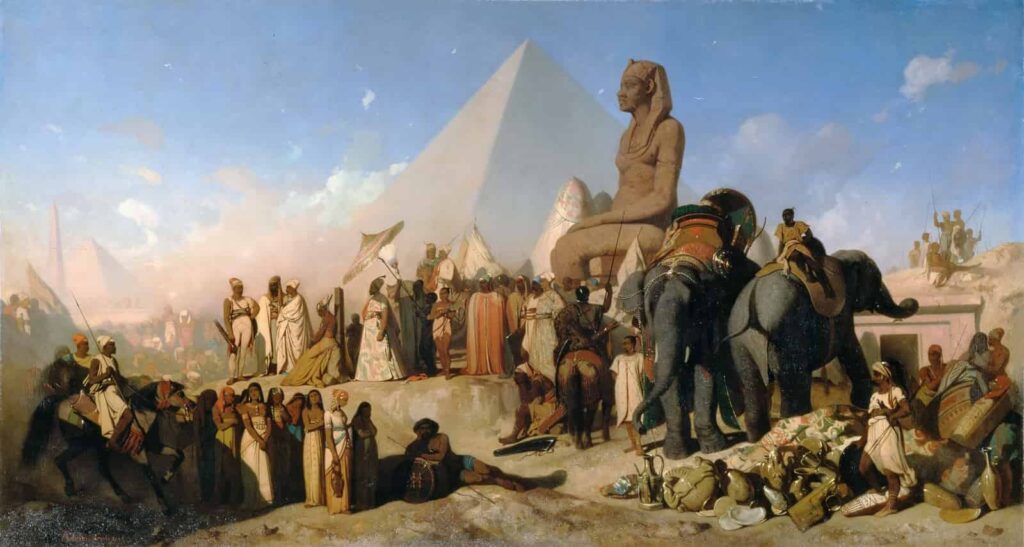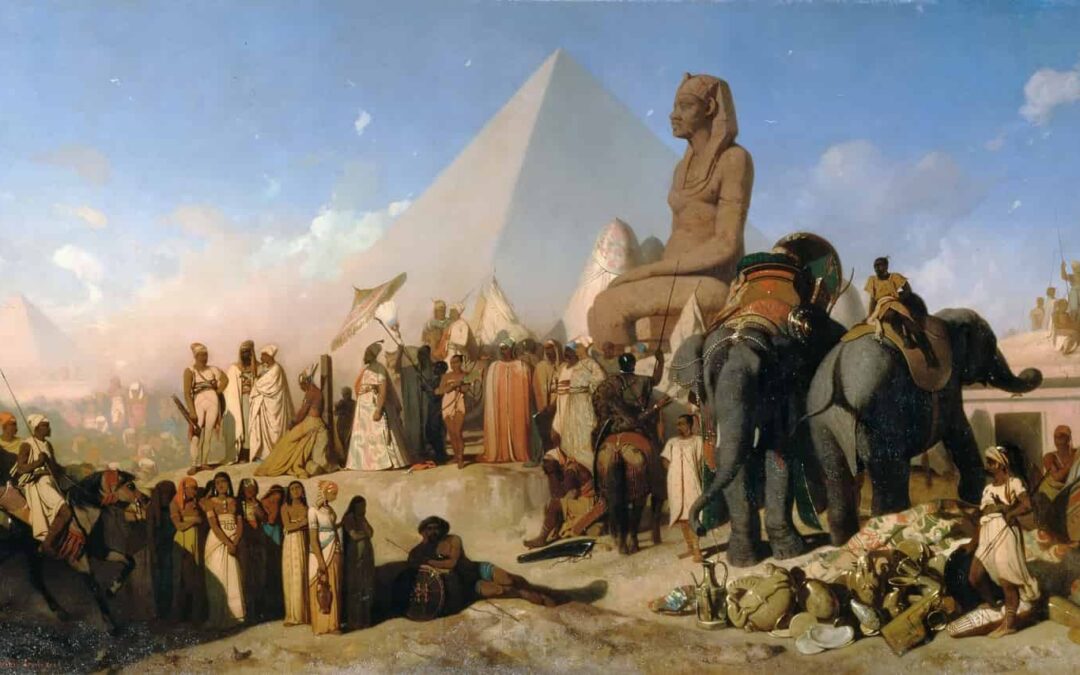The Persian Invasion of ancient Egypt: Background
Due to the great threat posed by the immense expansion of the Achaemenid Persian empire, the Egyptians and the Babylonian Chaldeans forgot their “small differences” and created a great alliance of nations together with Lydia and Sparta, to fight the Persians.
However, this alliance would be of little use to them, since Cyrus II managed to conquer and destroy Lydia in the year 546 BC, and managed to seize the entire Chaldean territory of Babylon a short time later, in 538 BC.
Obviously, this left the King Ahmose II of Egypt without great allies in the Middle East, so they began to seek the establishment of good relations with the Greek States, with the intention of strengthening themselves against the imminent attack.
The early years of the Persian invasion of Egypt
The brevity of the reign of Psamtik III (526-525 BC) is explained by an obvious reason: His father Amasis II (Ahmose II) died just at the worst possible moment, in the months before the Achaemenid invasion, and the newly appointed king did not know how to effectively face the Persian onslaught.
The final direct confrontation between Egypt and Persia took place in the so-called Battle of Pelusium, which led to the defeat and capture of Psamtik III by Cambyses II, the Persian king at the time.
This defeat and capture of the Egyptian sovereign finally resulted in the invasion of Egypt in 525 BC.
The three years that Cambyses II was king in Egypt (525-522 BC) have a totally contradictory image in the sources of knowledge that we have today: While the comments of the Graeco-Latin authors are extremely negative, the Egyptian sources show (or they want to show) a king concerned not to offend Egyptian sensibilities and who presents himself as an Egyptian king in every way.
The reign of Darius I
Nothing that Cambyses could do in life while he was ruler of Egypt prevented a revolt from breaking out in Egypt after his death.
However, the independence achieved hardly lasted two or three years, since Cambyses’s successor, Darius I (522-486 BC) was able to regain full control of the country around 519-518 BC.
Cambyses’s tolerant policy towards Egypt continued during the reign of Darius I, both in the administration and in the religion of the conquered kingdom.
The Persian Invasion of Egypt: The Government and Administration
Despite the tolerant policies of Cambyses and Darius I, Persian kings typically did not show this finesse in governing Egypt. Xerxes, for example, (486-465 BC) was much criticized and despised in his time for his manifest contempt for the Egyptian temples.
In terms of administration, the Persians realized that the system of provincial government that had existed up to now was the best possible, so they generally intervened little in internal politics.
However, to ensure the proper annexation of Egypt as a Persian territory, they placed a satrap in Egypt’s highest government post. The satrap was like a kind of viceroy in Egypt, a representative of the Persian king, of aristocratic origin, and who watched over the Achaemenid interests in the Egyptian territory.
Despite this relative little presence of Persian interventionism in the administration of Egypt, the truth is that it had a tight control of this territory to avoid new revolts.
To do this, the Persians carried out two measures: To place officials of non-Egyptian origin in the positions and public institutions that they considered necessary, and to maintain a military presence in the country that would guarantee its internal and external peace.







